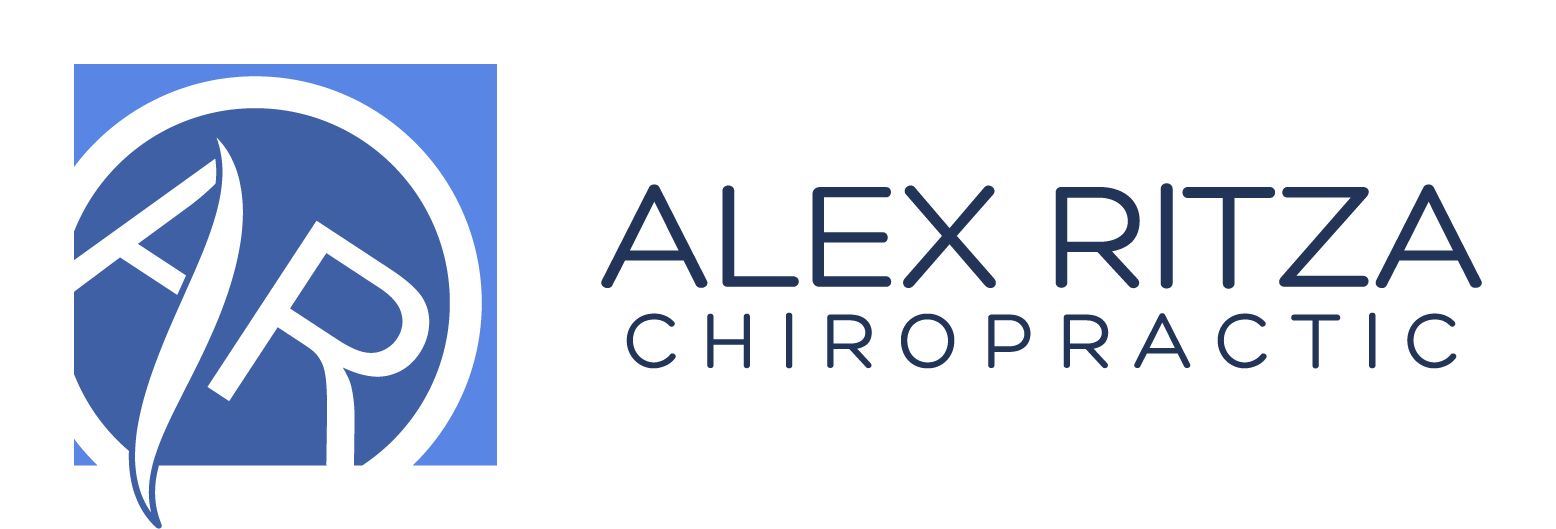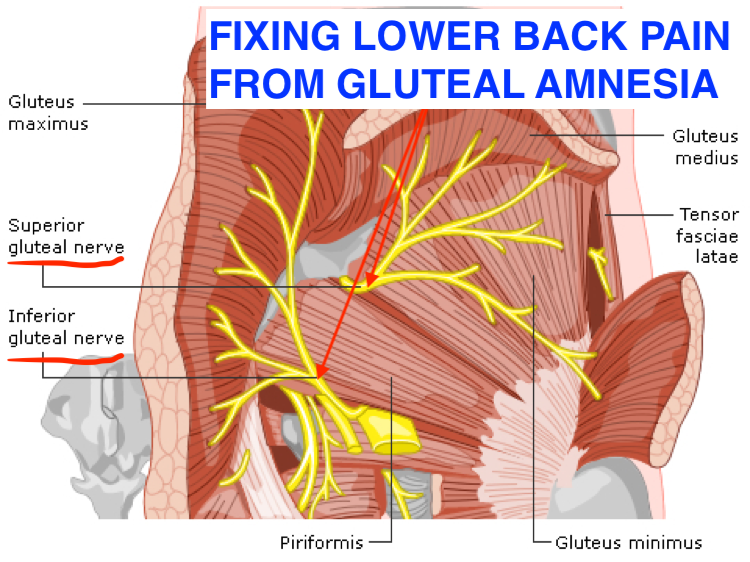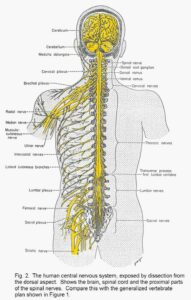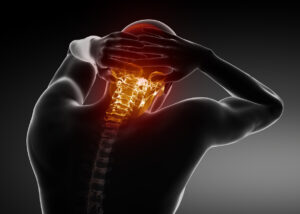Lower Back Pain Relief Toronto and How It Is Caused By Gluteal Amnesia
After providing lower back pain relief to thousands of practice members at our top-rated Toronto Corrective Chiropractic office, I can tell you one thing that is universal among almost all of those practice members – their lower back was seldom the problem. If you think lower back pain relief Toronto – think about fixing the glutes!
While most “traditional chiropractors” focus on the lumbar region that hurts, the actual problem usually stems from the middle back (thoracic spine) or the gluteal region. In the latter case, the problem is commonly called “gluteal amnesia.” In this article, we’ll explore the intricate relationship between lower back pain and “gluteal amnesia”. We will also explore how our Corrective Chiropractic approach is a superior approach for this condition and is why we are rated a Best Chiropractor in Toronto.
Understanding Low Back Pain And Gluteal Amnesia
Low back pain can arise from various sources, including muscle strains, ligament sprains, disc herniations, and degenerative conditions. The lumbar spine is a complex structure that supports the upper body, facilitates movement, and protects the spinal cord. When issues arise in this region, they can lead to pain, stiffness, and a reduction in overall function. However, these aforementioned tissues become overly strained and sometimes painful when they start to compensate. When the gluteal muscles stop working because of “gluteal amnesia” the low back takes on more work and can become strained acutely or over time.
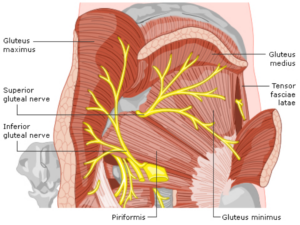 The Gluteal Complex: More Than Just MusclesThe gluteal complex comprises three muscles: the gluteus maximus, gluteus medius, and gluteus minimus. These muscles play a crucial role in stabilizing the pelvis, supporting the spine, and facilitating various movements, including walking, running, and standing up from a seated position. Gluteal dysfunction, or “gluteal amnesia,” occurs when these muscles fail to function optimally.
The Gluteal Complex: More Than Just MusclesThe gluteal complex comprises three muscles: the gluteus maximus, gluteus medius, and gluteus minimus. These muscles play a crucial role in stabilizing the pelvis, supporting the spine, and facilitating various movements, including walking, running, and standing up from a seated position. Gluteal dysfunction, or “gluteal amnesia,” occurs when these muscles fail to function optimally.
It is not usually a result of poor muscle size or the ability to create strength. It usually stems from poor activation and control of the superior and inferior gluteal nerves that control these muscles.
Whether by direct trauma (sitting or impact) or stemming from stress on the nerve from the lower back, these nerves can fail to properly activate the glutes. The smaller and weaker lower back muscles then try to take over, placing strain on them they have not evolved to handle.
How Low Back Pain Triggers Gluteal Dysfunction
- Inhibition of Gluteal Muscles
When an individual experiences low back pain, the body’s natural response is to protect the affected area. This often leads to changes in movement patterns, and the nervous system may inhibit certain muscles, including the gluteals, to reduce strain on the lower back. This inhibition can result in weakened gluteal muscles and compromised functionality.
- Altered Movement Patterns
Pain in the lumbar region can prompt individuals to adopt compensatory movement patterns. For instance, avoiding bending at the waist or favouring one side during walking can become habitual responses to pain. These altered movement patterns can further contribute to gluteal dysfunction by underutilizing these essential muscles, leading to weakness and impaired coordination.
- Prolonged Sitting
In today’s sedentary lifestyle, prolonged sitting is a common culprit for both low back pain and gluteal dysfunction. Sitting for extended periods can cause the hip flexors to tighten and the gluteal muscles to weaken. Over time, this imbalance can lead to a phenomenon known as “reciprocal inhibition,” where the hip flexors overpower the gluteals, hindering their ability to engage effectively.
Addressing the underline problem and cause of gluteal amnesia is why we are experts in proving lower back pain relief in Toronto!
How A Corrective Chiropractic Approach Provides Low Back Pain Relief By Fixing Gluteal Amnesia
The key is not to “treat” the low back pain but to restore the function of the body. You would never fix your car by removing the check engine light from the dashboard; that is just the signal that something is wrong just like pain!
Below is a brief description of how we fix “the engine” so that the symptom of the problem (pain!!) goes away
- Regain proper function
- Improve the function and movement of the spine. Spinal corrections help to restore proper spine movement and regain proper nerve function between the brain and the body. This will move interference in the gluteal nerve signal that is leading to gluteal amnesia
- Activate the gluteal nerves. For this, we prefer to use electro-acupuncture to comfortably stimulate the super and inferior gluteal nerves. This serves to restore the proper Brain-Body Connection to the gluteals so that they turn on and off when they are supposed to. It also has the added benefit to provide biofeedback to our patients of what it feels like to activate the gluteals.
- Corrective Exercises
Once the function of the body is restored then we have our practice members “practice” using those nerve pathways to make it the new normal. Going right to “rehab” without getting the body to work properly first is like trying to get an F1 driver to race in a Civic; no matter how much they practice they will never be able to maximize their abilities.
- Corrective exercises for gluteal amnesia targeting the gluteal muscles play a pivotal role in restoring their strength and functionality. Simple exercises such as bridges, clamshells, and hip extensions can help activate and strengthen the gluteals. Gradual progression and consistency are key to preventing further dysfunction.
Pardon the cycling branding – these are universally great exercises for core and gluteal activation!
- Posture Awareness
Improving posture is essential for both preventing and alleviating low back pain and gluteal dysfunction. Maintaining a neutral spine during activities and incorporating ergonomic changes in work and daily life can significantly impact the relationship between the lumbar spine and gluteal muscles.
- Incorporating Movement into Daily Life
Breaking the cycle of prolonged sitting is crucial for preventing and addressing low back pain and gluteal dysfunction. Incorporating regular movement breaks, engaging in activities that promote hip mobility, and adopting a more active lifestyle can contribute to overall musculoskeletal health.
Get Relief From Lower Back Pain by Fixing Gluteal Amnesia
The intricate connection between low back pain and gluteal dysfunction highlights the importance of considering the body as a holistic system. Addressing the root cause of low back pain and implementing targeted interventions to activate and strengthen the gluteal muscles can break the cycle of dysfunction and improve overall musculoskeletal health. By understanding and addressing this hidden connection, individuals can pave the way for a more pain-free and functional future.
